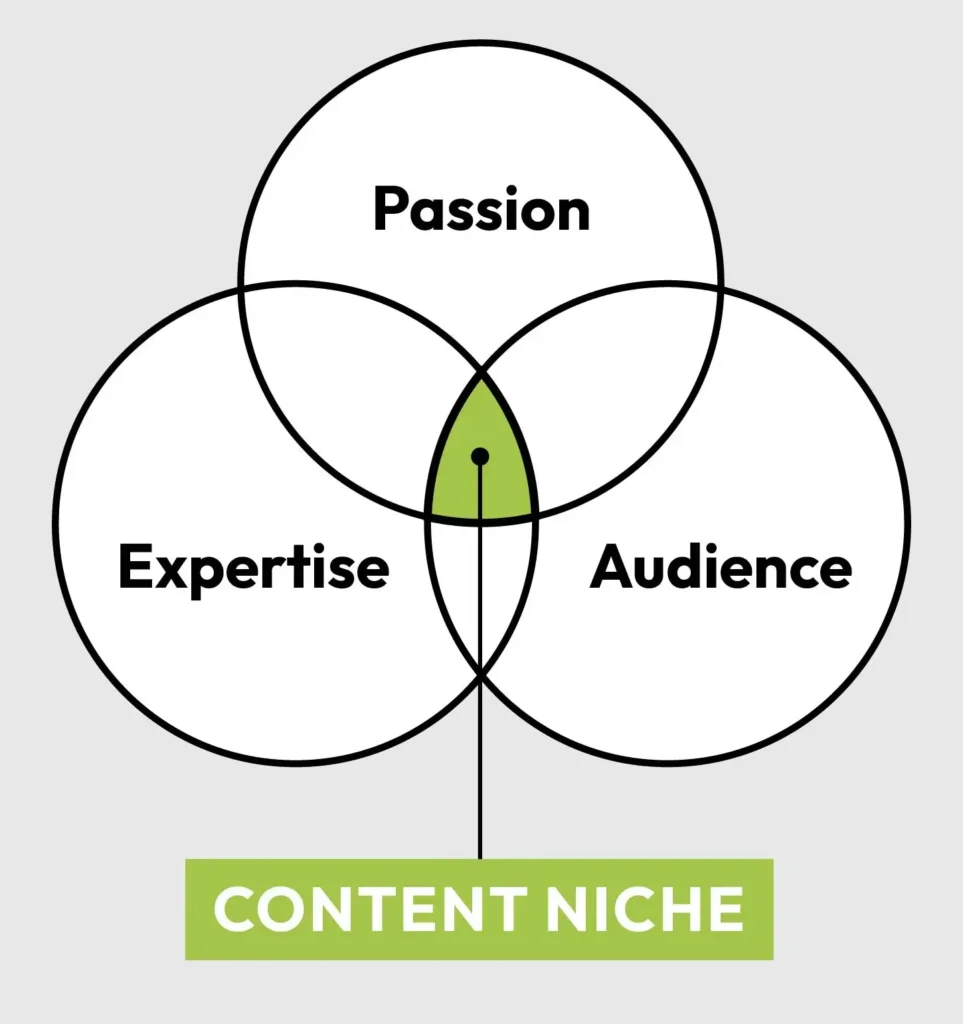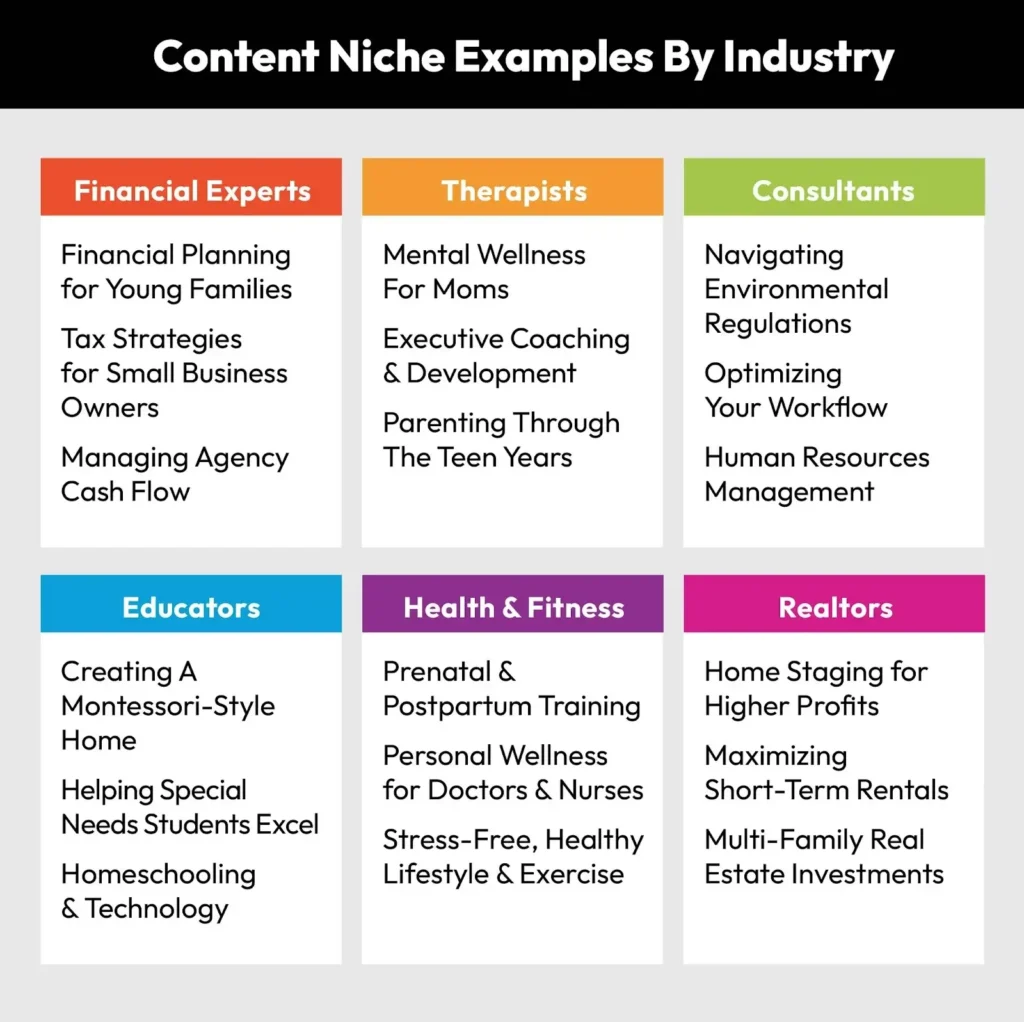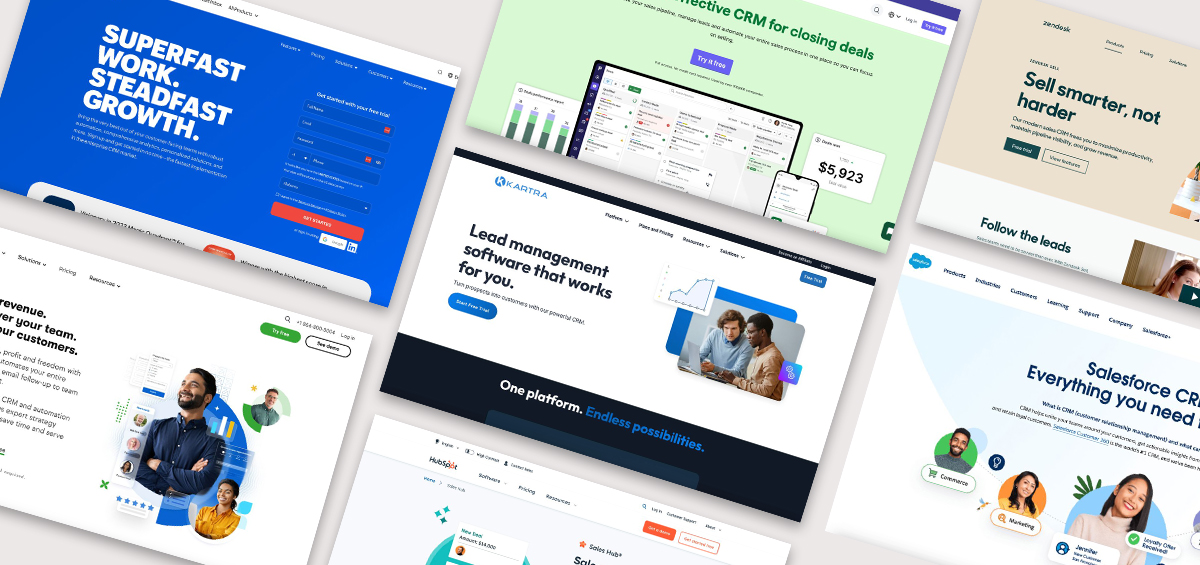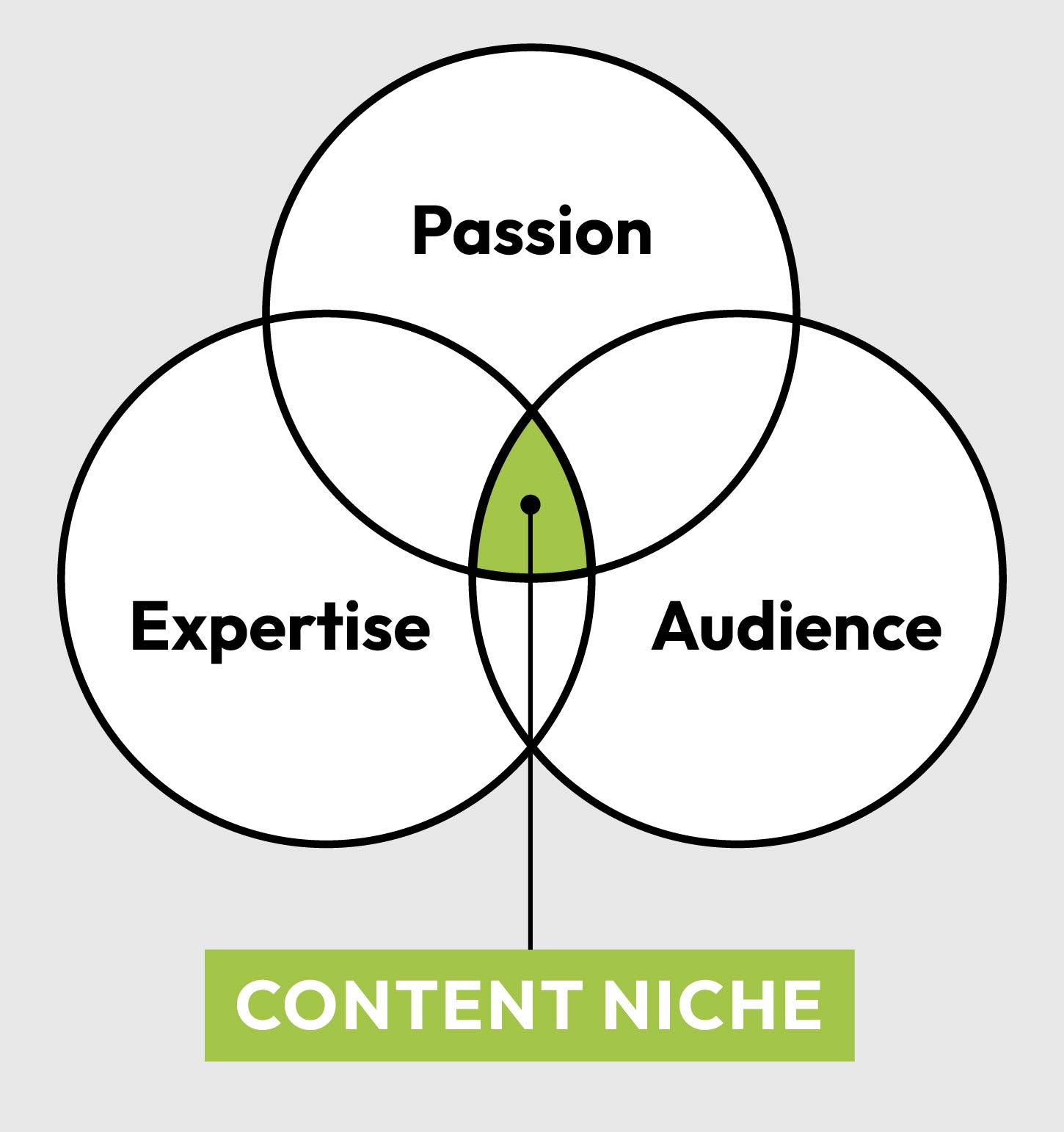The life of a content creator promises the freedom to pursue your passions, have more control over your life, and earn a living with passive income. In today’s creator economy, entrepreneurs use content marketing to develop a personal brand, sell products and services, and expand their influence to reach a global audience. As it becomes easier to access technology and connect with creative experts, more and more people are learning how to be successful at creating and distributing high-quality content. Instead of being trapped in linear career paths, today, it is more possible than ever for a coach, accountant, chef, or teacher to become a full-time content creator.
What is a Content Creator?
A content creator is someone who produces and shares original, engaging material across various digital platforms. They leverage their expertise, creativity, and storytelling skills to craft content that educates, entertains, or inspires their audience. Content creators can work independently or have collaborations with brands, utilizing mediums such as videos, blogs, podcasts, social media posts, and more to build a loyal following and potentially monetize their craft.
What are the Most Popular Types of Content Creators?
Video Content Creators
Video content creators produce visual content for platforms like YouTube, TikTok, and Instagram Reels. They excel at capturing attention through storytelling, tutorials, or entertainment and often build a personal brand around their on-camera presence.
Bloggers and Writers
These creators focus on content writing, crafting articles, blog posts, and long-form pieces. They often specialize in specific niches, providing in-depth information and analysis to readers seeking expertise on particular subjects. Typically, writers use advanced SEO tactics as their primary digital marketing strategy. They write new content that drives highly-qualified traffic from search engines like Google.
Podcasters
Podcasters create audio content, discussing topics ranging from news and politics to comedy and storytelling. They build intimate connections with listeners through their voices and often feature guest interviews or panel discussions.
Social Media Influencers
Social media influencers curate engaging content across platforms like Instagram, Twitter, and Facebook. They often focus on lifestyle, fashion, or niche interests, building a personal brand that resonates with their followers.
Photographers
Photography content creators capture and share compelling images across various platforms. They may specialize in areas like travel, food, or fashion photography, often building a distinct visual style that attracts followers and clients.
Live Streamers
Livestreamers create real-time, interactive content on platforms like Twitch or YouTube Live. They often focus on gaming but may also stream activities like cooking, music performances, or casual conversations with their audience.
To help you with your journey, we’ve put together five steps you can take to become a successful content creator:
1. Choose the Right Niche
The most important decision you’ll make for your content creation brand is which topic or niche to focus on. At first glance, this may appear to be the easiest step; however, audience competition is fierce. Chances are, the online world is saturated with content in your chosen field. To achieve long-term profits as a content creator, you must first rise above the noise and build an audience. It’s critical that you identify a specific niche within your market where you can stand out. It’s not enough to produce general content about your area of expertise; you need to connect with your audience in a unique way.

To determine exactly what your niche should be, ask yourself these three questions:
- What am I most passionate about? Content creation is fun, but success will require a long-term mindset with commitment, planning, and hard work. If you aren’t passionate about the topic, producing content can quickly become a burden and it will be difficult to maintain quality.
- Where do I have the most unique experience? Passion will only take you so far. Ask yourself, what sets you apart in your field? How have your unique experiences shaped your knowledge and the services you provide? With the abundance of information online today, your unique point of view or process is essential to connecting with your audience.
- What unique subgroup of people will find my experience and knowledge most helpful? At the intersection of your passion and experience is the subgroup of people who need what you have to offer. This is your audience.
Here are some examples of ways this might take form:

2. Create a Content Strategy
Behind the best content creators is a strategic plan that helps them produce consistent, relevant content. Content creation is both an art and a science; search engines demand both frequency and quality in order to surface your content. Planning is key to ensuring that your content will work for you.
The key to a successful content strategy is understanding your goals. How do you envision your life in one year, three years, or ten years? Is content creation a side gig to earn extra income? Or do you want to build a brand that can sustain you for the next few decades? The size of your goal will have a big impact on the speed of your content output, how many platforms you employ early on, and how much time and money you must invest to get started.
For example, with a passion project that you will eventually monetize in 3-5 years, you might gradually hone your voice and master a single platform before expanding to add more. Growth is slower, but not as expensive or time-intensive.
However, if you want to transition out of your current job and make content creation your full time business in the next 24 months, you’ll need intensive effort. Expect to invest a lot more time and money to monetize your content products more quickly.
Develop a Content Calendar
A content calendar is a critical part of any content creator’s strategy. A calendar allows you to work more productively, so you don’t have to be “always on” in order to keep your content machine running. When you research trending topics and decide which to focus on weeks or months in advance, you have more time to create high-quality content. Use platforms like Hootsuite to queue up and schedule social media posts ahead of time so they post automatically at the most optimal times.
Not every piece of content has to be a long-form blog or professionally-produced video content either. In fact, research shows that demand for microlearning—the consumption of quick, insightful content— is higher than ever in 2023. Short, expert lessons are a critical component of growing your brand and building a loyal audience.
3. Choose Your Core Digital Content Medium
Once you’ve chosen a niche and a strategy for developing your content, it’s time to decide on the type of content you’ll create. When starting as a content creator, your resources and time are likely limited. However, your target audience will spend most of its time on one or two channels, so that’s where you should focus your efforts.

Start by researching the platforms and types of content your audience consumes the most. This step is crucial for building a solid online presence and ensuring your content reaches the right people. For instance, if chefs and home cooks are most active on YouTube, then creating a YouTube channel will provide the most exposure. If selling professional services and targeting business executives, you might start a podcast or invest time in LinkedIn. Yoga instructors or dieticians often find the most engagement on social media platforms like Instagram or TikTok.
When choosing your core medium, consider these factors:
- Platform Demographics: Each platform has its own user base. For example, TikTok tends to skew younger, while Facebook has a broader age range. Research the demographics of each platform to ensure it aligns with your target audience.
- Content Format: Different platforms excel at different types of content. YouTube is ideal for long-form video content, while Instagram is better suited for visual content and short-form videos. Consider what type of content you’re most comfortable creating and which platform best supports that format.
- Discoverability: Some platforms make it easier for new creators to be discovered. TikTok’s algorithm, for instance, can help new creators go viral quickly. YouTube, on the other hand, rewards consistent, high-quality content over time. Consider how each platform’s discoverability features align with your growth strategy.
- Monetization Options: If you want to earn income from your content, look into the monetization options each platform offers. YouTube has its Partner Program, while Instagram and TikTok offer various options for creators to earn money through brand partnerships and in-app features.
- Your Skillset: Play to your strengths. If you’re comfortable on camera, video-based platforms like YouTube or TikTok might be a good fit. If you’re a strong writer, consider blogging or platforms like Medium.
Once you’ve chosen your primary platform, it’s time to focus on content creation. Here are some tips to help you get started:
- Use Hashtags Strategically: Hashtags can significantly increase your discoverability on platforms like Instagram and TikTok. Research popular hashtags in your niche and use them consistently in your posts.
- Engage With Your Audience: Respond to comments, ask for feedback, and create content that encourages interaction. This helps build a loyal community around your brand.
- Analyze and Adapt: Use the analytics tools provided by your chosen platform to understand what content resonates with your audience. Use these insights to refine your content strategy over time.
- Cross-Promote: Don’t neglect others entirely while focusing on one primary platform. Share snippets of your content on other platforms to drive traffic to your main channel.
- Collaborate: Partner with other creators in your niche to expand your reach and provide value to your audience.
Remember, building a strong online presence takes time and consistency. Focus on creating high-quality, valuable content for your audience, and be patient as you grow your following. As you become more comfortable with your chosen medium and start seeing results, you can consider expanding to additional platforms to increase your reach and impact as a content creator.
4. Track Your Metrics
Understanding your content’s performance is crucial for growth and success as a content creator. Tracking metrics allows you to refine your content ideas, optimize your posting schedule, and demonstrate your value to potential brand partnerships. You can make data-driven decisions that maximize your impact and efficiency by leveraging analytics tools.
Start by familiarizing yourself with the native analytics tools provided by your chosen platforms. For instance, YouTube Studio offers in-depth insights into video performance, audience demographics, and engagement rates. Similarly, Instagram Insights provides valuable data to business accounts, including reach, impressions, and follower growth.
For a more comprehensive view of your online presence, consider implementing Google Analytics on your website or blog. This powerful tool offers a wealth of information about your audience’s behavior, including traffic sources, page views, and conversion rates. Understanding these metrics can help you tailor your content strategy to serve your audience’s interests and needs better.
When analyzing your metrics, pay attention to the following:
- Engagement Rates: Look at likes, comments, shares, and saves. High engagement rates indicate that your content resonates with your audience.
- Reach and Impressions: These metrics show how many people see your content. If your reach is low, you may need to adjust your posting times or use more effective hashtags.
- Audience Demographics: Understanding who your audience is can help you create more targeted content and attract relevant brand partnerships.
- Watch Time and Retention: These metrics indicate how engaging your video content is. If viewers are dropping off quickly, you may need to adjust your content structure or delivery.
- Click-Through Rates: If your content includes calls to action, track how often your audience follows through.
Use these insights to inform your content strategy. For example, if certain types of posts consistently perform well, consider incorporating more of that content into your schedule. Adjust your posting schedule accordingly if you notice engagement dropping at certain times.
Remember, metrics aren’t just for your own benefit. As you grow, you’ll likely want to work with brands or secure sponsorships. Having a clear understanding of your metrics allows you to pitch to brands with confidence, showcasing the value you can bring to potential partnerships.
Consider creating a monthly or quarterly report summarizing key metrics across all your social media accounts and platforms. This practice will not only help you track your growth over time but also prepare you for professional collaborations.
While metrics are important, don’t let them stifle your creativity. Use them as a guide, not a strict rulebook. Sometimes, content that doesn’t perform well initially can lead to new ideas or attract a different segment of your audience. Stay true to your voice and vision while using metrics to refine and optimize your approach.
5. Develop a Production Process
As a content creator, you are your brand. Your followers will listen to you because they value your expertise. As instructional designer Alex Cartmill says, “The greatest marketing advantage you have, and will always have, is that there’s only one of you.” However, that doesn’t mean every task must be completed by you.

Focus on Your Strengths and Outsource Non-Core Tasks
Consider your strengths, and which tasks are core to your brand. If a task is time-consuming, distracts from your core business activities, or you lack the necessary expertise or resources to do it effectively, it’s a good candidate for outsourcing. Are there non-core tasks that you can outsource such as graphic design, editing, or social media management?
For example, you may write blog articles, but hire a content writer to edit and improve the copy, or a graphic designer to create infographics and social media content to promote the pieces. Or perhaps you’re great on camera and record insightful clips throughout the day, but a social media manager helps you turn them into dynamic Instagram reels. For teachers, an online course consultant can optimize your expert content for the best student experience.
Outsourcing tasks to specialized professionals results in superior quality work and frees up your time to focus on the things you do best. Five years down the road, you’ll look back at some of your original content and marvel at how far you’ve come. However, a commitment to high-quality content from the start goes a long way toward helping you rise to the top in a competitive field.
6. Monetize Your Content
As your content improves and you grow a captive audience, the next step is to monetize what you’ve built. Surprisingly, an elaborate website, enormous Instagram following, or extensive email list is not a prerequisite for success. All that’s required is a loyal group of followers who have faith in your expertise because you’ve provided them with compelling content.
There are many ways to make money as a content creator, and pricing on information products varies widely. You control the content and the pricing. Start monetizing by repurposing your content into different formats so you can use it on new platforms. Start with content products that are a natural fit for your skill set, platform, and audience; then add more assets over time.
Here are just some of the possibilities:
- Done-For-You Kits – DFY tools or kits provide immediate value to clients, offering shortcuts that save them time and money. They might be meal plans, event templates, marketing copy scripts, or student worksheets for educators. What tasks can you help your followers accomplish?
- Paid Sponsorships (Ads) – Lots of content creators partner with brands who will pay them to promote their products and services.
- Books and eBooks – Self-published or print-on-demand books make money while you sleep! These publishing options avoid royalty fees and the sunk costs of publishing a pre-defined quantity which increases your profit margin. Additionally, books create passive income that increases as your reputation grows.
- Paid Courses – Selling a course is a great way for almost any content creator to share premium knowledge with an unlimited audience.
- Webinars – Reach thousands of people around the globe through live video events and on-demand webinars. Webinars can be the end-product themselves, or they may be used to promote other products like a video course.
- Workshops – Workshops are a time-intensive video event because they typically require you to be present. However, they offer a wide array of valuable opportunities to monetize your knowledge. You might sell high-ticket seats to a limited audience, use a low-cost workshop to generate leads for a higher-value offer, or automate on-demand viewing of the workshop for passive income.
- Memberships – Membership and subscription programs can be used to sell premium content such as a newsletter or additional course modules.
- Affiliate Marketing – If you have significant website traffic or a large social media following, use affiliate partnerships to promote products and be paid a sales commission. If you’ve ever seen a content creator promote a product and then say “use my code to save money…”, this is affiliate marketing.
- Speaking Fees – If you’re an influencer, people care about what you have to say. Public speaking is a lucrative option for anyone who is a subject matter expert or just confident in your skills and knowledge.
7. Scale Your Brand
Once the product is proven, the message is honed, and the production process is flowing, it’s time to turn your attention to scaling your brand. As income grows, most content creators seek additional outlets to multiply their brand’s reach. This is an ongoing process that has several components:
- Re-invest your revenue in marketing and advertising campaigns
- Add related niches, using your initial content strategy as a template
- Experiment with additional platforms and media to create multiple streams of revenue
- Form partnerships with brands in related industries
- Create an affiliate marketing program
- Develop an e-commerce platform to create and sell new products
While all of these outlets may not be a fit for you, innovating and reinvesting in your business will lead to continued growth for your brand.
Your Brand, Your Way
You are passionate about your area of expertise and want to use that passion to help others—that’s why becoming a content creator may be a great fit for you! Be sure to take the necessary steps to identify your unique niche and develop a strategy that will enable you to reach your intended audience. Expect to spend the first few years creating a content brand focused on finding the right fit between product and market, fine-tuning the content product, and building the foundational audience that will launch your brand into exponential growth.
Content Creator FAQs
About Kartra
This blog is brought to you by Kartra, the all-in-one online business platform that gives you every essential marketing and sales tool you need to grow your business profitably – from sales pages and product carts to membership sites, help desks, affiliate management and more. To learn how you can quickly and easily leverage Kartra to boost your bottom-line, please visit kartra.com.


